In Part One of the Tim Mountford story we heard how the eighteen year-old Tim Mountford was living on his own, sharing a flat with another rider, working at a local bike shop and training for the 1964 Olympic Games in Tokyo, as well as being creating and being the chief editor of a cycling magazine titled the “Southern California Cycling Journal”.
Tim Mountford went on to race in two Olympic Games and competed at world level in the tandem sprint before turning to the Professional Six Day scene and working his way up through various sponsors and contracts to land the biggie; a place on the famous TI Raleigh team managed by the legendary Peter Post.
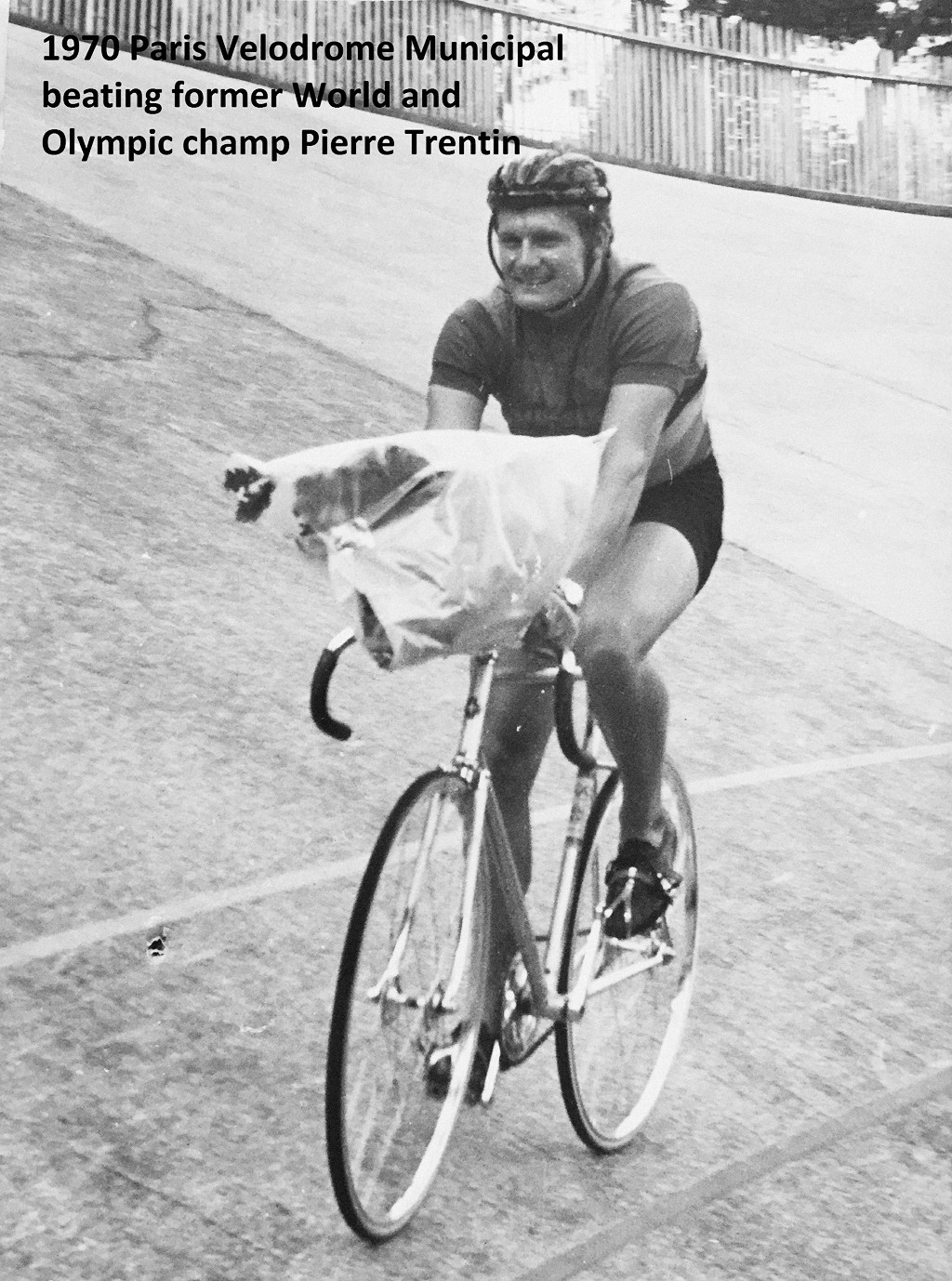
You rode four events at the Leicester Worlds – a busy man.
“The 1970 World’s in Leicester did not go as planned for me mostly due to an incident during my Kilo race.
“But in the end as I had hoped, I did get enough recognition to help launch my Pro career at the London Six Day that followed a few weeks later.
“It’s not what you think though …
“For my preparation for Leicester I moved to Paris in February of 1970 to train and race with Morelon and Trentin, and coach Louis Gerardin (Toto).
“Over the following months I did well on various tracks in France and Italy beating everyone at one time or another and winning the Grand Prix of Paris beating Trentin in the finals.
“Spectators and my sponsor, AVIS-Lejeune, were please because I always gave Morelon a run for his money in the finals beating him once from behind on a local 250m Paris track. Once!
“My hope in Leicester was to win the 1000 meter individual time trial because unlike the match sprints there is less left for chance. Or so one would think.
“Using 170mm cranks I got off to a comfortable start and with little stress I rode the fastest first two laps of the day on the 333 meter track. I felt strong and confident.
“Going through turn two on the bell lap I was looking down at the track while mentally preparing myself for the pain I was about to endure when I entered the back stretch and final half lap of the race. A process I went through in my mind a hundred times before the race.
“Coming out of turn two I looked up ready to attack the pedals as if my life depended on it, when all of a sudden one of our team members was next to the track pole line screaming to cheer me on. It was such a shock! I lost my focus and almost jumped off the bike in fear of hitting the person. I didn’t recover my focus and speed and I recall that I finished with a time of 1:09:00 well off the podium.
“I didn’t sleep well that night.
“In the eighth finals of the match sprints Dutch strongman Pieter Van Doorn held me on the balustrade through the final turn to the finish line.
“I recall being very angry at the UCI officials for denying my protest of his unfair radical riding within the final 200 meters.
“After the sprint races that day I became very frustrated because that summer I had never lost to Peder Pederson (RIP) nor Frenchman Gerard Quintyn who now won silver and bronze in the championships which was won by Morelon.
“At this point things were not going well for me and I had thoughts of returning home to work at the family bike shop in North Hollywood.
“The U.S. team coach asked me to ride the tandem (I was fourth at the Worlds the previous year) however I was not a good match on the tandem with my good friend Skip Cutting and we never got the bike moving.
“For the four kilometre team pursuit the coach asked me to replace one of the team riders. It was my strong ride in the team pursuit that caught the attention of my future agent Jan Derksen and Dutch promoter Charlie Ruys.
“After 2000 meters into the team pursuit qualifying race I started taking double lap pulls at the front to keep us equal with the opposing team across the track. We immediately lost one rider off the back and only John Vande Velde could keep up with me and do his pulls at the front. The third rider was just holding on.
“We didn’t qualify but it was an exciting race.”
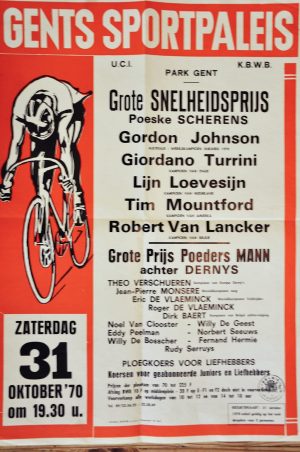
What was your first professional race contract?
“I guess you could say that my first pro contract was for the London Six Day race a few weeks after the worlds in Leicester. Except I was a mechanic, not a rider.
“As luck would have it Jackie Simes became gravely ill after the pro sprint races in Leicester and my agent Jan Derksen failed to convince Ron Webb to give me Jackie’s contract to ride the London Six.
“I needed the money so Webb hooked me up as a mechanic for two Dutch teams, de Wit/Loevesijn and another team who I don’t recall, with Lien Jansen as the soigneur for both teams. My first real pro contract would be in Gent.
“After London I moved on to Gent and rented a flat from cycling’s favourite innkeeper Mrs. Deene.
“She had some great stories of riders before they became famous including pampering World Pursuit Champion Hugh Porter.
“I found my way into the Belgium pro kermises and started training at the Kuipke velodrome a few blocks from my flat.
“One morning I woke to find Mrs. Deene standing over me with a stern look on her face. She said, “Well, are you going to get to the start line on time today? You have rent to pay don’t forget!”. Also her mother-in-law who ran the guest house around the corner stopped making me lunch unless I paid her.
“So, this was crunch time.
“Race and do well or hitch a ride on a freighter ship back to the States.
“That October my first pro contract was for 3,000 francs ($75 U.S. bucks at the time) from race director Oscar Daemers for a ‘round robin’ pro sprint series on the famous 166 meter Kuipke velodrome between myself, current World Champ Gordon Johnson, Leijn Loevesijn, Robert Van Lancker and Giordano Turrini.
“Halfway through the series Leijn was eliminated and I had a fall in the final turn against Johnson and broke my bike frame. I slammed into the 56 degree banking and slid around the turn like a Disneyland fun ride and part way down the home stretch.
“Laying there with the wind knocked out of me, I looked up and there was Oscar Daemers looking down at me. He said; ‘you’re fine, get up, I am re-running the race!’ Leijn lent me his bike and I beat Johnson in our re-run race.
“In the finals against Van Lancker and Turrini I came from last position going into the bell lap. We were at full speed spinning a 48×14 while diving into turn one with Turrini leading as I started to climb over Van Lancker on his outside.
“Coming out of the final turn we were stacked three high and all three of us hit the finish line at the same time. Van Lancker inched out Turrini and I was third by half a wheel.
“It was a spectacular race and all the spectators were on their feet cheering and I caught Oscar smiling for the great performance.
“The excitement of that race series in Gent with a new group of world class pro sprinters (plus Sercu) sparked the interest of several race directors across Europe to re-establish a Pro Grand Prix Sprint circuit not seen since the 50’s.
“This would become a source of predictable income that allowed me to continue my career that first winter.”
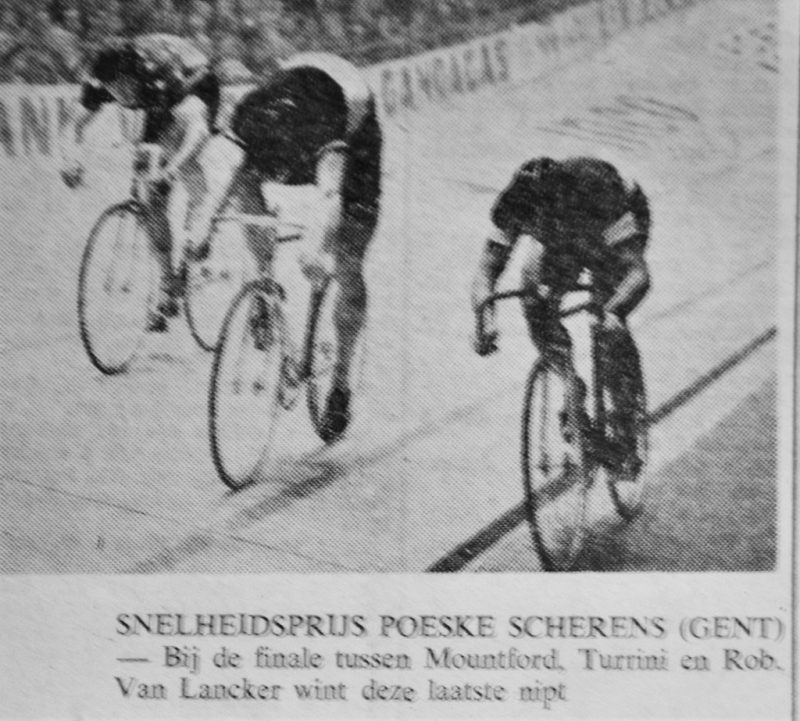
Pro teams and earning a living: Seiko, Canada Dry, Raleigh and Shimano – tell us about those please – with whom did you sign first as a pro?
“Financially I was okay during my first winter, sharing expenses with Jackie Simes.
“I made money from the indoor Pro Grand Prix series in Gent, Antwerp, Dortmund, Rotterdam and Berlin; rode a few 50-100k Madison events, plus the Antwerp and Groningen Six Days races, both with Jackie.
“By spring the race director of the new Ahoy Sports Hall (a new 200 meter indoor track) asked Jackie and I to move to Rotterdam from Gent and he would give us all the winter contracts including future rides in the Groningen Six.
“However, income for the summer months was limited to a few sprint contracts on the summer tracks in England, Holland, Belgium and Italy and velodrome appearances at the end of big road races like the TDF or Liege-Bastogne-Liege Velodrome de Rocourt.
“I needed more money to supplement track contracts and the Dutch criteriums was my only option. However, I couldn’t get a team sponsor until I did well in the crit races.
“So, my sprinter legs would have to diversify. Ouch!”
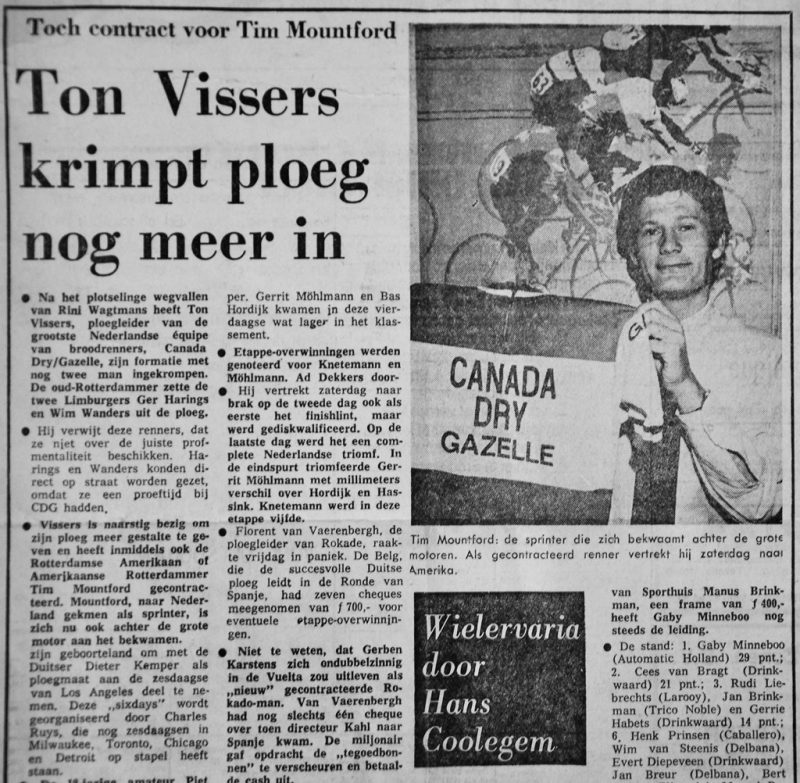
“My first road sponsors were the local retail shop owners along the finish line of the weekly pro criterium races in the different cities.
“The butcher, the baker, (no candlestick makers though) or bars.
“I would arrive early and knocked on the doors of the shop owners who lived above their shop and I told them I (the American) would race with their shop name on my jersey for 100 guilders ($30 U.S. bucks).
“I attached their business name onto my bright purple jersey with white stick on letters and, very carefully, slip on the jersey.
“Although the letters blew off by the third lap my purple jersey was visible and after an hour into the race I could hear several spectators in front of the shops cheering for me.
“’Go Tim!’ Go America!’
“I got a lot of respect from the other riders and the cheering from these local shop owners kept me going when my sprinter legs wanted to quit. So, these small business owners were my first sponsors.
“By mid-summer I was getting 100 guilders start money from some of the race promotors, plus checks in the mail for prime sprint wins and finishing in the top fifteen.
“I was in public view and in the newspapers and finally the owner of a jewellery store who started a Dutch team sponsored by Seiko watch asked if I would ride for him.
“He would match my winning prize money in several selected criteriums.
“Two months later I received an actual contract with the Canada Dry-Gazelle team for matching win prize money in all the races in Holland and Belgium and for appearance when I raced at the Ahoy sports hall or the motor paced races on the Olympic Stadium track in Amsterdam.
“Rini Wagtmans and a few other top Dutch riders were also on this team.
“I was enjoying crit racing often getting into breaks with guys like Franz Verbeek and Jan Janssen and once beating Roger De Vlaeminck in a head to head prime sprint at a kermis in front of a few thousand of his Belgium spectators.”
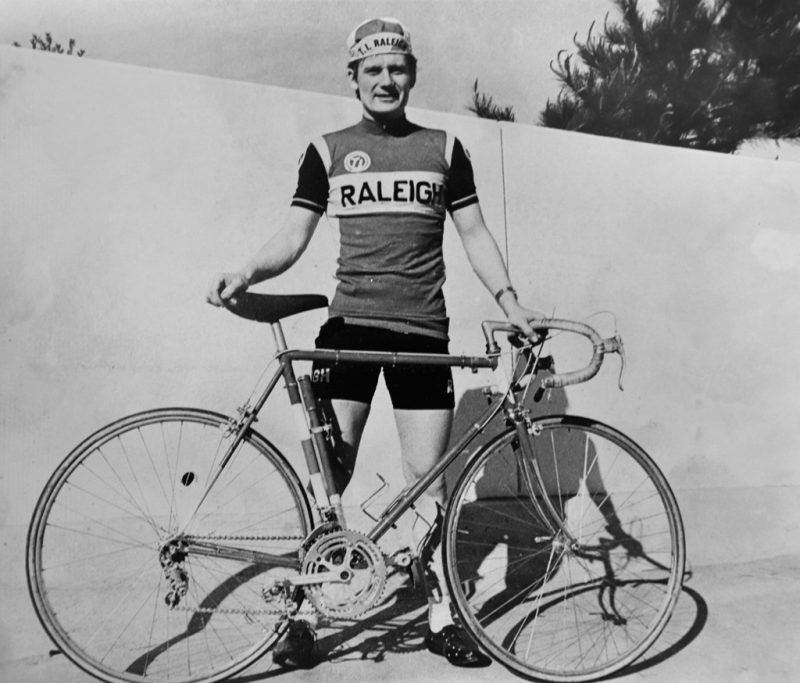
“After Leijn Loevesijn won the 1971 Pro World Sprint Championships in Italy the English Carlton team became the red, black and yellow TI Raleigh team.
“I received a nice contract from TI Raleigh that include a monthly pay check, travel, clothing and equipment, sprint and road bikes, and two custom Six Day bikes made in the Gazelle factory.
“Later I inherited Gordon Johnson’s team car (but no credit card, lol).
“And as we know the Raleigh team became a major UCI road team under the direction of Peter Post.
“I wasn’t a Classic or Tour rider and Peter let me continue with my local crit race schedule separate from the team calendar.
“In the summer of ‘74 after I returned to the US where I received a contract with the Shimano America team for their U.S. promotion prior to the world championships in Canada.
“I retired before the championships in Canada and bought a bike shop in Silicon Valley, California.”
Check out Part Three of the Tim Mountford story where he tells us about Big Motor stayer racing.



